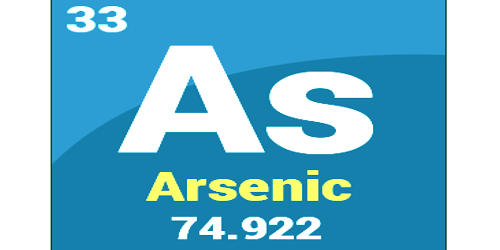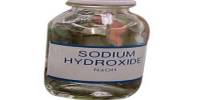Arsenic is a chemical element with the symbol As and atomic number 33. It is a naturally occurring allotropic pnictogen and metalloid trace element with the atomic symbol [As] and atomic weight 74.92 that is found in water, air, food, and soil, and has a role as a micronutrient. The abundance of arsenic in the Earth’s crust is about five grams per ton; the cosmic abundance is estimated as about four atoms per million atoms of silicon. It was known as early as the fourth century B.C., when Aristotle referred to one of its sulfides as “sandarach,” or red lead, according to Chemicool.
Properties
Arsenic is a member of group Va of the periodic table, which combines readily with many elements. It is a steel-gray, brittle solid with low thermal and electrical conductivity. There are some forms of elemental arsenic are metal-like and is best classified as a non-metal. It is a crystalline metalloid found in the Earth’s crust, but in its free form, it is quite rare.
- atomic number: 33
- atomic weight: 74.9216
- melting point: (gray form) 814 °C (1,497 °F) at 36 atmospheres pressure
- density: (gray form) 5.73 g/cm3 at 14 °C (57 °F); (yellow form) 2.03 g/cm3 at 18 °C (64 °F)
- oxidation states: -3, +3, +5.
Occurrence
Arsenic occurs in many minerals, usually in combination with sulfur and metals, but also as a pure elemental crystal. It is a nonessential trace element that is widely distributed in nature. In the environment, arsenic is combined with oxygen, chlorine, and sulfur to form inorganic arsenic compounds.
Arsenic is a metalloid. It has various allotropes, but only the gray form, which has a metallic appearance, is important to the industry. It is a naturally occurring element widely distributed in the earth’s crust. It is characterized as a white, yellow, gray metallic, or black solid that is odorless.
Arsenic was used in medicinal agents in the 19th and early 20th centuries, but has been replaced by safer and more effective agents and has not been in use for over 50 years.
Uses
Arsenic is a well-known poison. Arsenic compounds are sometimes used as rat poisons and insecticides but their use is strictly controlled.
- The primary use of arsenic is in alloys of lead (for example, in car batteries and ammunition). Arsenic is a common n-type dopant in semiconductor electronic devices, and the optoelectronic compound gallium arsenide is the second most commonly used semiconductor after doped silicon.
- It is used as a doping agent in semiconductors (gallium arsenide) for solid-state devices. It is also used in bronzing, pyrotechnics, and for hardening shot.
- Arsenic and its compounds, especially the trioxide, are used in the production of pesticides, treated wood products, herbicides, and insecticides. These applications are declining due to the toxicity of arsenic and its compounds.
However, arsenic poisoning occurs in multicellular life if quantities are larger than needed. Arsenic contamination of groundwater is a problem that affects millions of people across the world. The most important use of arsenic in the United States is in wood preservatives.
















